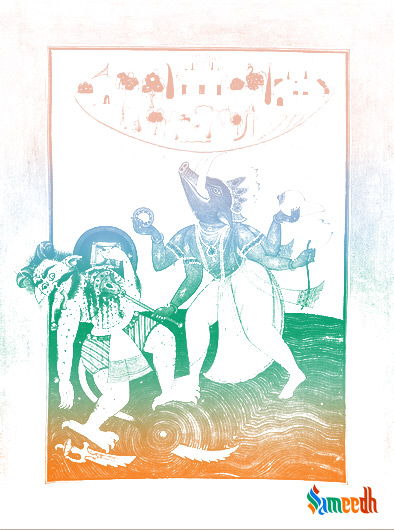Lord Vishnu changed into a boar after adopting the Matsya (fish) and Kurma (tortoise) avatars to preserve Mother Earth from drowning in the cosmic ocean. As a result, he created Varaha to safeguard the planet Earth from Hiranyaksha, a demon who had stolen it.
In Hinduism, an avatar is the embodiment of a deity in human or animal form to counterbalance some particular evil in the universe. Usually referred to as the ten manifestations of Vishnu, an Avatar plays a great role in the history of Indian Mythology. Matsya (fish), Kurma (tortoise), Varaha (boar), Narasimha (half-man, half lion), Vamana (dwarf), Parashurama (Rama with the axe), Rama (hero of the Ramayana epic), Krishna (the holy cowherd), Buddha, and Kalkin (the incarnation yet to come) are the ten manifestations of Vishnu.
The Bhagavad Gita gives one example of this phenomenon when Krishna tells Prince Arjuna:
“Whenever there is a decline of righteousness [Dharma] and rise of unrighteousness then I send forth Myself. For the protection of the good, for the destruction of the wicked, and for the establishment of righteousness, I come into being from age to age.”

Varaha avtar of Vishnu, killing a demon to protect the Earth ; Image source: British Museum
The Story Of Varaha
Lord Vishnu changed into a boar after adopting the Matsya (fish) and Kurma (tortoise) avatars to preserve Mother Earth from drowning in the cosmic ocean. As a result, he created Varaha to safeguard the planet Earth from Hiranyaksha, a demon who had stolen it. Varaha is a boar-like manifestation of the Hindu God Vishnu. Varaha is the third of Vishnu’s ten main avatars, according to the Dashavatara. Varaha is best known for the legend of pulling the Earth (personified as the goddess Bhudevi) from the cosmic ocean. Vishnu arrived as Varaha to save the earth after the demon Hiranyaksha kidnapped her and hid her in the primordial waters.
Varaha defeated the monster and lifted the Earth from the sea with his tusks, restoring Bhudevi to her rightful place in the world. Varaha might be represented as a full-fledged Boar or as an anthropomorphic creature with a boar’s head and human body. Bhudevi, the Earth, is frequently represented as a young woman who is carried by Varaha.
Lord Vishnu demonstrated the slow development of evolution by adopting the shape of a boar. Matsya, a fish, was the first, followed by tortoise, an amphibian, and Varaha, a land animal.